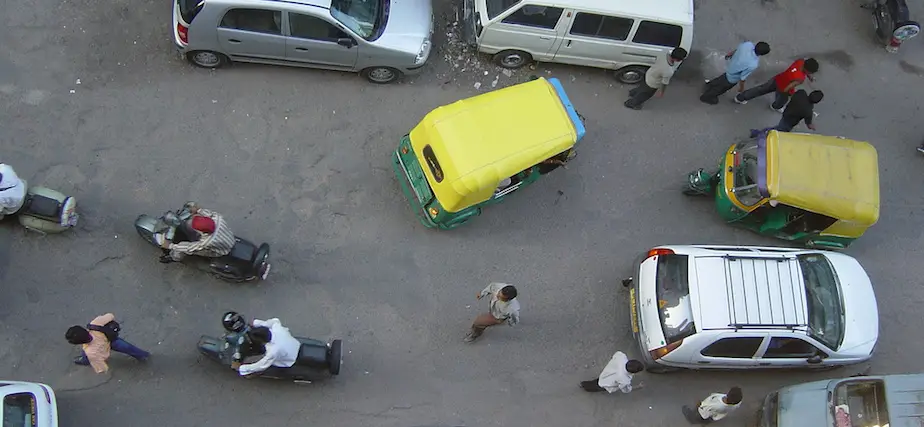It’s late night, you want to make your way back to your place and have no idea where you are: north could potentially be south and as far as you can tell, your house could be a five minutes’ walk away or far far away. It’s 9am and you have to make your way to that important job interview, you head out to the Underground and find yourself in a strange little place, you check the map app on your smart phone, but struggle to read the map correctly.
Welcome to the world of spatial awareness: a world that requires attention to your surroundings to grasp the city to its fullest. Some have it, some don’t, some know where that special alleyway is, while some are too scared of diverging from crowded streets for the fear of getting lost. Spatial awareness is both an innate and an acquired skill that needs to be exercised on a regular basis to boost brain activity and improve understanding of the world around.
Studies have shown that those that can read their surroundings tend to have increased brain activity and the ability to model 3D scenario while navigating around with little difficulty. There is also correlation between navigating around town and gender. Whereas men navigate by plotting paths along the way, women tend to get around by identifying local landmarks and connecting dots. However studies are after all studies and some contest results on an on-going basis, but be it as it is and whether your spatial awareness intelligence falls to whichever spectrum, it is something that must be exercised regularly.
To help you boost spatial awareness skills, we offer the following 5 tips.
1. Get Lost
Probably the single most effective way to boost your spatial awareness skills. Getting lost not only puts you at the centre of an unknown realm, but makes one feel anxious and increases brain activity. Try it, wonder off around your neighbourhood to a place you never been and you’ll notice how you will start paying more attention to your surroundings as compared when you are roaming around your block. Getting lost also helps you find exit solutions and plot routes that connect you with the familiar.
2. Visualise at the end of the day
This is a meditation exercise. At the end of the day, close your eyes and try visualising your day from the moment you get off bed to the moment you get into bed. For example, in a mental map, try drawing your route, exiting your house, to the underground, to work, the path you traced during your work hours and your final path at the end of your day. Additionally, play with timings, fast forward or rewind to see how it develops. It’s a fun thing to do plus you boost your memory and place some elements like buildings and people that you pay little attention on a daily basis
3. Draw your path
Buy a map of your local area or your city, and with different colours trace your route at the end of the day. As you progress, you’ll see the patterns that arise and some will even reveal something about yourself. For example, you may think you are an adventurous fellow, but after a couple of days you will notice that you take the same exact route every day, you might decide then to try something new! This also helps draw a map of the city in your head and decrease your over-reliance on mobile phone maps. Also, you could potentially become the next Picasso!
4. Play video games
Not everyone is fond of staring at a screen with a controller for continuous hours, but the fact is, video games help to develop psycho motor skills and spatial awareness. This is because video games make you interact with spatial elements, interacting with maps, visual engagement and physical coordination. All of these when put into real life scenarios are often surprisingly useful. When you memorize a complex level in a game you are memorising quite a lot of information, try doing that when you navigate around your city by paying attention to your spatial surroundings. Oh, and if someone tells you he/she is a gamer, just remember that you have sitting next to you an expert urban navigator – they might not be aware of this though….
5. Look Up!
Well not up as in the sky, but just look around. Most people fixate their destination and focus on getting from A to B without grasping what happens in between. Perhaps this is the most important and simplest of all exercises to boost spatial awareness skills. Take some time every day to look around, what kind of buildings are around you, old or new? What restaurants? Is it mainly housing during that stretch of the journey or is it empty? And how far is it from your destination? Does it make you feel a certain way? Or can you associate the area with a specific colour? You’ll be surprised not only by how much you discover, but by how you can relate to areas more effectively with physical elements, conceptual correlations and senses.
Spatial awareness is a central element of our daily lives. It helps us understand, interact and appreciate the places we live. Unfortunately, with the advent of smart phones and other technologies, many of us are forgetting there is a world around. These technologies can aid, but are not the main drivers to develop it. The suggested exercises are just a few of many techniques, and we would love to hear what you do to keep up to date with your surroundings and how you make sense of your city.
Photo: Philipp Birmes


